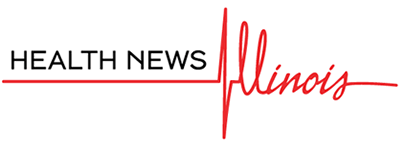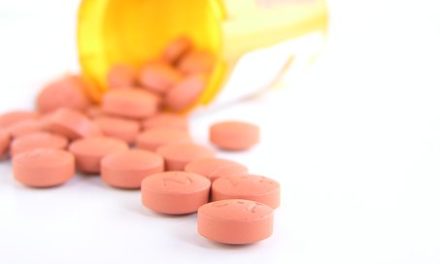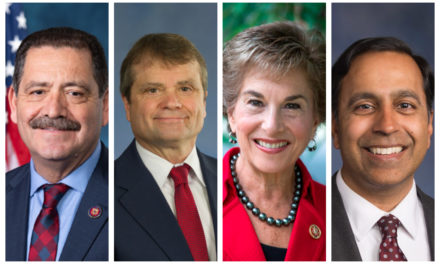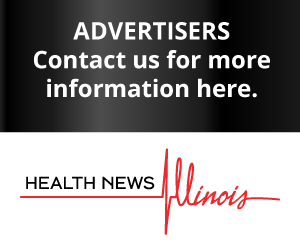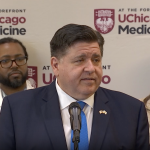
Panelists discuss pandemic challenges, future of COVID-19
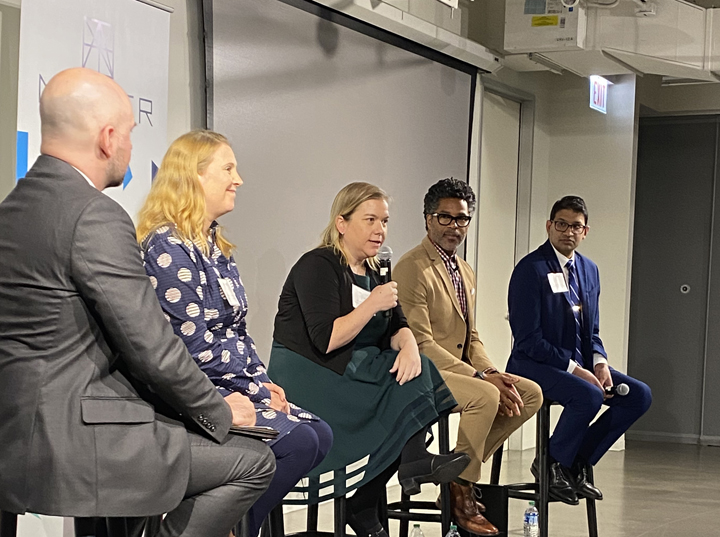
Public health officials talked about challenges healthcare workers faced with the COVID-19 pandemic and what comes next at a Health News Illinois panel this week.
Panelists were:
Dr. Allison Arwady, Commissioner, Chicago Department of Public Health
Dr. LaMar Hasbrouck, Chief Operating Officer, Cook County Department of Public Health
Dr. Emily Landon, Executive Director for Infection Prevention and Control, University of Chicago Medicine
Dr. Sameer Vohra, Director, Illinois Department of Public Health
Edited excerpts below:
HNI: Is COVID-19 over?
Dr. Emily Landon: No. I think we all agree that COVID-19 is something we’re gonna have to live with for a long time. It’s now part of our network of health. As we move forward in our lives today, cases are better than they have been in probably over a year. And for the first time ever, I’ve been comfortable in this setting not wearing a mask around all of you guys. But that’s because of the way things look today, and I think there’s a good chance that we’re gonna see things move in different directions and different seasons and as new variants come about. But we need to be prepared to be flexible about how we approach our own health and the health of our communities.
HNI: How has the uptake been for the new COVID-19 boosters?
Dr. Allison Arwady: This is the first time we have updated the COVID-19 vaccine to be a good match for the variants circulating now. That’s something we do for flu every single year, and I think it is fairly likely that we may end up with sort of an annual COVID vaccine every fall like we have an annual flu vaccine every fall. My concern is that people have not in Chicago and around the country fully understood that the idea of a booster right now is different. That even if they got a booster three or four months ago, they should get this one this fall. And I think people are just kind of tired of COVID. So I can tell you we’ve been looking at this generally in Chicago, but also by age and race, ethnicity … But as of right now, fewer than 15 percent of white Chicagoans who are eligible have chosen to get that bivalent booster. And if you look at Black Chicagoans, it’s fewer than 5 percent, and if you look at Latinx Chicago, it’s fewer than 3 percent. And that does not put us in a good place heading into this fall and winter.
HNI: How do you reach out to these communities where uptake is lower?
Dr. LaMar Hasbrouck: The playbook really never changes. It’s all about outreach. It’s all about smartly partnering with the community. That’s why we exist, and that’s what we do. And so to the degree that we can have better and better, richer and richer, more authentic and sustainable relationships with the community, then we can really galvanize the speed of trust with a message for the micro-vaccination clinics, understanding that what we’re telling you is the best knowledge that we have today. It may change tomorrow, it may be modified, but just really focusing on the communities that we serve. So it really is about, as I like to say, putting the public in public health.
HNI: What do you think health leaders can do to address the rising politicization of public health?
EL: Public health in Chicago is amongst the best in the world, right? In Cook County, in Illinois, we’ve got the A-team here, but they’re still up against this really huge wall of this constant disinformation campaign, especially around COVID. We didn’t see that so much with monkeypox, and that means that all of the efforts that your team has made to make this communication that builds trust, helps get to the right communities with the right things that they need at the right time can happen because those freeways are cut open, because there aren’t a bunch of people talking on social media and blogging and protesting and saying that masks are a mind control device, monkeypox vaccines are a hoax. That stuff really causes problems. It kills people in the United States. Millions of people have died of COVID that didn’t need to because of this undermining of trust. And I think everyone in public health, not just in Illinois, but all over the United States and the world, have really struggled to figure out how to respond to that in a way that doesn’t undermine COVID and doesn’t undermine free speech. It’s really hard to have the message, ‘COVID is over. Don’t worry about it. Just ignore all that disinformation. But also you need to get your booster right now because otherwise, you could die if a new variant comes.’ Those don’t go together. And I think that’s why it’s really hard. And there’s nothing that any one little organization—not that Chicago or Cook County or Illinois is little—but there’s nothing that one organization can do to combat that on their own. And this is, I think, the biggest challenge that public health is facing going into the future, and it affects not just public health and prevention, but also the way that we take care of patients in the hospital and whether or not people are going to follow the sort of rules and things that they need to in order to stay safe there and whether or not I can convince my patients to get vaccinated.
AA: The most important position, honestly, that we were able to get newly in COVID was a graphic designer. And maybe, number two, a social media team. People like to just imagine funding the healthcare, not the work of building trust and building communication … I think we learned just to be out there every day. We were doing Facebook Lives taking questions directly from the public seven days a week. And even now, we do it once a week. And my goal is just to be transparent … Frankly, we have trolls who watch Facebook and, right now, I welcome that because it’s an opportunity to sort of respect that anybody who is making decisions around this is making those decisions for what they believe to be about for their health. It’s just that they’re often making them from a place of real disinformation. We have a long history of dealing with folks who don’t believe in vaccines. I’m a pediatrician by training. I still see patients too. So I have these conversations all the time. But what was different with COVID is, I think, how organized that anti-vaccine movement became around this. They had graphic artists and social media folks, and managed to tie this belief to a political position in a way that we just had not seen.
HNI: As we see this increased polarization, how’s that affecting the work that you do?
LH: What I learned in terms of politicization is don’t kill the messenger. That would be my message to the public. We are agnostic arbiters of science in practice. In all that, we inform our elected officials, ‘What is the guidance, where should we go?’ And then, ultimately, they make the choice as to what direction they want to go. I have seen dozens of my colleagues, just within the first year of the pandemic, be fired, bullied, chased out of the job, quit, just because they were being antagonized. So I don’t think people understand. Are we tired of COVID as public health leaders? Yeah, we’re tired … It’s sucking up all the oxygen in the public health dome, so to speak. There’s a lot of other things that we need to do. And everybody’s focused on politicizing this right or left issue so that makes our job harder. And that makes it more difficult to recruit workforce over the pipeline.
Dr. Sameer Vohra: I think one of the things that we should acknowledge is that whenever things become the dominant issue of the moment, there’s politics around it. And I think that’s part of the place where public health hasn’t been the dominant issue. And so, when we’re trying to get back to a place where it’s about facts, it’s about information that we know is relevant, and I thought to Dr. Hasbrouck’s point, it’s humility at a time where we have to be so incredibly responsive. Because if we do not, something fills a space. And I think for many of us as clinicians, part of it a lot of the time with your patients is that you say, ‘Well, I’m not sure, I’m trying to get the most information. This is my recommendation at the moment.’ But in this kind of environment, something goes into space immediately and spreads so quickly that you fall behind. And I think that has been the challenge around the communication piece.
HNI: How can public health take back the narrative and rebuild that trust?
SV: I think it’s part of just trying to show up, and I think it’s showing up across all of the different types of platforms. We were all in virtual environments over the last two years. It’s great to be in this room to be able to have conversations where people are in front of you. But I think for me, even as I’ve taken on the role as the state public health director for the last few months, it’s traveling across communities, to being there locally and seeing the things fully on hand sort of being pushed. I think part of being public health officials is you have to get the information, you have to see it on the ground and what it looks like. But then I think it’s also getting back to a place where we very much can try to sort of think through what are sort of the bigger ideas. What is public health globally about? And honestly, get to a point where we can say, ‘Well, here’s what we’re looking at, here’s what we don’t know, here’s what we’re trying to find out.’ Will we get the patients to do that? That’s a whole other question that I think this next stage will allow us to get a sense of whether or not that’ll come to fruition.
